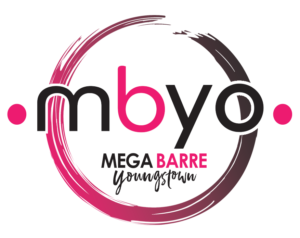
Homebound and shut in, as so many of us are right now, can have some perks, like family board game sessions in the middle of the day and finally cleaning out closets.
But erratic eating and scavenging through the pantry for potato chips or downing a pint of Handles Ice Cream while freaking out at the news, is wreaking havoc on diet plans — and waistlines — everywhere.
The “COVID -20” is a new term in reference to gaining that much unwanted weight before this is all over, much like the Freshman 15. We’re all in a situation where the gym is shut down, we’re home a lot, we’re stressed, and it’s making all too many of us overeat.
With people feeling unsure about their next paycheck, seeing empty shelves at the grocery store and spending days on end at home, it’s no surprise that stress eating is a real thing.
“In acute times of stress we release cortisol … and prolonged stress, which is what we are now experiencing [gives us] elevated cortisol, which increases hunger,” said Christian Gonzalez, naturopathic doctor and integrative oncologist based in Mountain View, Calif. “The prolonged mental stress signals our body that food may be scarce, and when that is not the case, we begin to graze, snack and overeat.”
Experts say getting back to better eating habits is more critical now than ever, especially to increase your own immune system as the virus continues to spread.
Even in a time of binging, we need to remember that our food intake is one of the only things we CAN control in an uncontrollable situation. And we need to find foods that provide important nutrients to support overall health and wellness.
Here are 20 ways to quit stress-snacking and start eating better
(After all, we’re going to have to get out of these sweat pants one day)
1. If you’re venturing out to the grocery store, look for protein-dense snacks that will support your health, instead of grabbing stuff that just tastes good. Examples: nuts, seeds, dehydrated kale chips, eggs and meat sticks.
2. Use what you’ve got before shopping. Start with your freezer and pantry and build a meal from there, using the store to fill in with produce and meat.
3. Get rid of the tempting candy or junk. If you can keep the “candy bowl” hidden at work, then you can do it at home too. Don’t let those foods even enter the house!
4. Beans for breakfast. The soluble fiber found in beans gives you a lasting effect on your energy throughout the entire morning, so you’ll be full, focused and less likely to mindlessly snack.
5. Plan snacks just as you would plan meals. Meal planning is the best way to combat this! Plan every meal and every snack with precision, but don’t overthink it. Carrots, cucumbers and hummus don’t need to be rocket science, but they need to be available and planned for during the day.
6. Watch the sugar: Listen to the World Health Organization’s recommendations on sugar intake but skim some off the top. “The WHO says 6 teaspoons a day of added sugar is acceptable for adults. But sugar can depress the immune system. I’d say stick to 4 teaspoons and spread them out during the day. Instead of coffee and cereal at the same time, split them up.”
7. Don’t hoard, it’s a dangerous situation for willpower and the waistline. Don’t stock up on junk. Remember, if it’s in your house, it’ll likely be in your mouth.
8. Shop the Perimeter. Stores have plenty of fresh vegetables and fruit. Start there when you do your shopping. And don’t be afraid to try frozen fruits or veggies. They are equally as nutritious and can be used in pretty much all the same ways as fresh.
9. Watch portion sizes. Nuts are great but not by the handful. They have it all: protein, fiber, and most contain heart-healthy fats. When combined, these nutrients contribute to feelings of satiety. No need to go overboard here — one-quarter to one-half cup of mixed, roasted, unsalted nuts is plenty.
10. Get help if you need it. Many dietitians (like myself) are working virtually. Schedule a consult via Zoom, especially if you’re trying to stick to a specific meal plan like keto, paleo or vegan. And while this may be a good time to start a new diet, maybe you can use the accountability portion of nutrition coaching more than anything.
11. Get your probiotics. The probiotics in fermented foods like saurkraut or kefir help modulate the immune response, lowering the risk of septic shock in response to serious viral infections. Plus it’s a good source of vitamin C. Not a fan, grab a supplement!
12. Keep the same schedule as you would if going to work outside the home. Get up at the time you would otherwise, have breakfast, exercise at home with MBYO -to-go, do what you would otherwise. Finding a sense of normalcy will help you keep regular eating habits.
13. When you think you’re hungry, drink water! Hydrating will stave off hunger pangs, plus dehydration goes in disguise as hunger ALL the time.
14. Don’t be sitting for longer than three hours at a time. Get up, move, have some water, take a mental break and get in a few minutes of deep breathing every few hours.
15. Fiber is everything. Quinoa cooks quickly, has 6 grams of fiber per serving and paired with vegetables is an easy snack. It’s a complete protein and it contains all of the amino acids to help support our body’s tissue and muscle growth. The combo of protein and fiber is a fabulous option to help curb cravings.
16. Even snacks should be “real food”. Consider making your own version of that snack that doesn’t use any processed ingredients!
17. Being stuck at home doesn’t mean being sedentary. Move every single day and I always promote “earning your shower”. The more you move, the less time you have to mindlessly snack, plus the endorphins that get released during exercise usually helps you choose healthier options than if you didn’t do that activity. Don’t ruin a good calorie burn by going overboard at your next meal or snack.
18.With economic uncertainty looming, buy inexpensive produce like potatoes and sweet potatoes — bake or roast them, add some beans or vegetables. They will keep you fuller for longer on a lot less money and keep your budget in check.
19. If you are going to eat something processed, like a chip or cracker, pair it with something fresh, like guacamole, salsa or freshly made hummus for example. Balance is key.
20. Experiment with stress-reduction techniques. As hard as it is right now, gratitude and kindness goes a long way. Try a yoga class or our Compassionate Connecting Classes offered virtually every week to help ease your anxiety, provide you coping tools and satisfy your community craving, even if just on the computer. Even in life’s most difficult situations, there is ALWAYS something to be grateful for, you just need to look for it.



